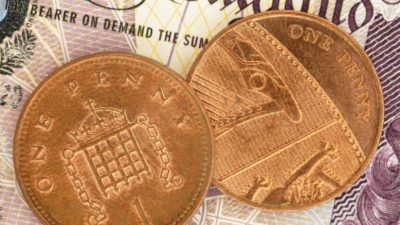This week’s first-quarter results from BP (LSE: BP) (NYSE: BP.US) weren’t too bad, but they concealed a surprising number of hidden nasties that may have escaped your notice.
Shale bites dust
The big oil majors haven’t been able to profit from North American shale in the way that some smaller firms companies have  managed to do. Last year, Royal Dutch Shell reported a $2bn impairment on its US shale assets, and earlier this year, the Anglo-Dutch firm reported a further $631m write-down on its US shale assets.
managed to do. Last year, Royal Dutch Shell reported a $2bn impairment on its US shale assets, and earlier this year, the Anglo-Dutch firm reported a further $631m write-down on its US shale assets.
BP has now followed suit, and reported a $521m impairment on its Utica shale acreage, where the firm has decided not to proceed with development plans.
Legal costs
BP reported that the total ‘cumulative net charge’ for the Gulf of Mexico spill remained unchanged at $42.7bn during the first quarter of this year, as it continues to contest business loss claims it believes are unfounded.
However, this ‘cumulative net charge’ doesn’t tell the whole story. During the first quarter of 2014, BP’s cash expenditure on costs related to the Gulf of Mexico spill rose to $600m — double the $300m spent on spill-related costs during the first quarter of 2013.
BP’s legal costs could remain very high for several more years, especially as the final stage of BP’s Clean Water Act court case has now been postponed, and won’t start until 20 January 2015.
Russian profits down
BP’s 20% stake in Russian oil giant Rosneft has become even more controversial in recent weeks as tensions have risen in Ukraine, and Rosneft’s CEO, Igor Sechin, is now the subject of US sanctions.
BP reported that its share of Rosneft’s underlying profits fell to $271m during the first quarter of this year, down from $1,087m during the fourth quarter of last year. The decline was partly due to the weakening rouble, and partly due to BP’s accounting for its Rosneft stake, which provided a one-off ‘favourable effect’ in the fourth quarter of 2013.
Is BP still a buy?
Of course, investors didn’t care about any of this when BP’s results were published — BP shares rose by 1% in early trading, after investors saw that the firm had increased its quarterly dividend to 9.75 cents, a 2.6% increase on last year’s fourth-quarter payout.
In my view BP is still a buy for income, and looks good value on a forecast P/E of 10, and a prospective yield of 5.0%.






